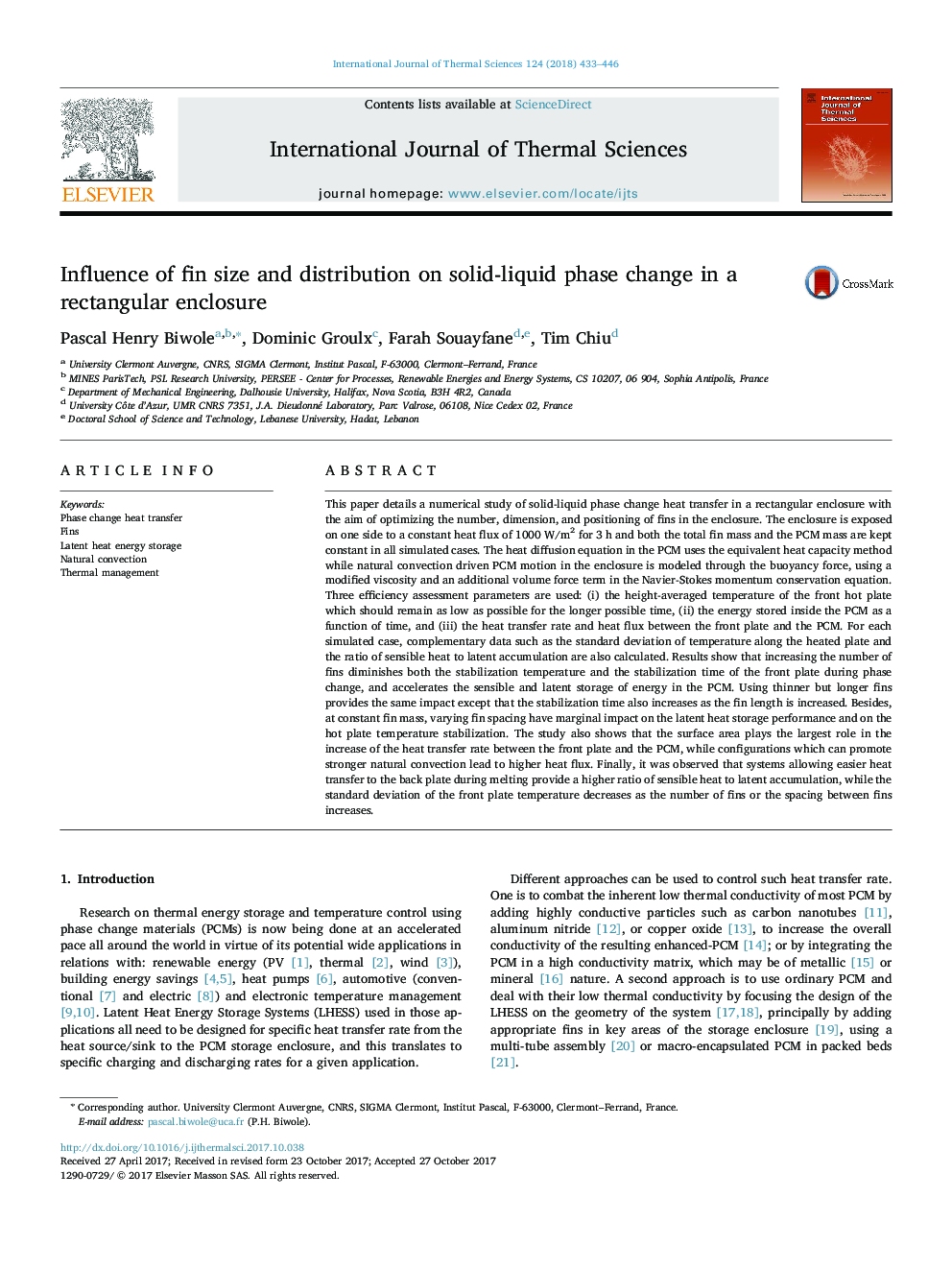| کد مقاله | کد نشریه | سال انتشار | مقاله انگلیسی | نسخه تمام متن |
|---|---|---|---|---|
| 7060883 | 1458698 | 2018 | 14 صفحه PDF | دانلود رایگان |
عنوان انگلیسی مقاله ISI
Influence of fin size and distribution on solid-liquid phase change in a rectangular enclosure
ترجمه فارسی عنوان
تأثیر اندازه و توزیع باله در تغییر فاز جامد و مایع در یک محفظه مستطیلی
دانلود مقاله + سفارش ترجمه
دانلود مقاله ISI انگلیسی
رایگان برای ایرانیان
کلمات کلیدی
موضوعات مرتبط
مهندسی و علوم پایه
مهندسی شیمی
جریان سیال و فرایندهای انتقال
چکیده انگلیسی
This paper details a numerical study of solid-liquid phase change heat transfer in a rectangular enclosure with the aim of optimizing the number, dimension, and positioning of fins in the enclosure. The enclosure is exposed on one side to a constant heat flux of 1000Â W/m2 for 3Â h and both the total fin mass and the PCM mass are kept constant in all simulated cases. The heat diffusion equation in the PCM uses the equivalent heat capacity method while natural convection driven PCM motion in the enclosure is modeled through the buoyancy force, using a modified viscosity and an additional volume force term in the Navier-Stokes momentum conservation equation. Three efficiency assessment parameters are used: (i) the height-averaged temperature of the front hot plate which should remain as low as possible for the longer possible time, (ii) the energy stored inside the PCM as a function of time, and (iii) the heat transfer rate and heat flux between the front plate and the PCM. For each simulated case, complementary data such as the standard deviation of temperature along the heated plate and the ratio of sensible heat to latent accumulation are also calculated. Results show that increasing the number of fins diminishes both the stabilization temperature and the stabilization time of the front plate during phase change, and accelerates the sensible and latent storage of energy in the PCM. Using thinner but longer fins provides the same impact except that the stabilization time also increases as the fin length is increased. Besides, at constant fin mass, varying fin spacing have marginal impact on the latent heat storage performance and on the hot plate temperature stabilization. The study also shows that the surface area plays the largest role in the increase of the heat transfer rate between the front plate and the PCM, while configurations which can promote stronger natural convection lead to higher heat flux. Finally, it was observed that systems allowing easier heat transfer to the back plate during melting provide a higher ratio of sensible heat to latent accumulation, while the standard deviation of the front plate temperature decreases as the number of fins or the spacing between fins increases.
ناشر
Database: Elsevier - ScienceDirect (ساینس دایرکت)
Journal: International Journal of Thermal Sciences - Volume 124, February 2018, Pages 433-446
Journal: International Journal of Thermal Sciences - Volume 124, February 2018, Pages 433-446
نویسندگان
Pascal Henry Biwole, Dominic Groulx, Farah Souayfane, Tim Chiu,
